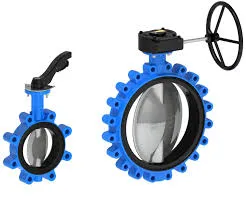Dec . 30, 2024 21:15 Back to list
Understanding Different Types of Electric Cables and Their Applications in Various Industries
The Importance of Cable and Electric Wire in Modern Society
In the ever-evolving landscape of technology and infrastructure, cable and electric wire play pivotal roles in ensuring the smooth operation of our daily lives. From powering our homes to enabling communication systems, understanding the significance of these components helps us appreciate the complexity and interconnectivity of our world.
Understanding Cable and Electric Wire
Electric wire refers to conductive materials that carry electricity from one point to another. Typically made from copper or aluminum, these wires are insulated to prevent electrical shocks and short circuits. Cables, on the other hand, are bundled collections of wires that can serve various purposes, from power transmission to data communication.
The proper functioning of electric wire and cabling systems is essential for a vast array of applications. In residential settings, household wiring facilitates the distribution of electricity throughout the home, allowing for the operation of appliances, lighting, and heating systems. In industrial environments, heavy-duty cables are designed to handle large amounts of current, ensuring the safe operation of machinery and equipment.
Types of Electric Wires and Their Applications
There are several types of electric wires designed for specific applications. For instance, THHN wire (Thermoplastic High Heat-resistant Nylon-coated) is commonly used in building and construction for its heat resistance and durability. Romex wire, with its Non-Metallic Sheathed Cable, is typically used in residential wiring due to its ease of installation and flexibility.
In the realm of telecommunications, coaxial cables and fiber optic cables are crucial. Coaxial cables are used for cable television and internet connections, while fiber optic cables, which transmit data as light pulses, are essential for high-speed internet and telecommunications. This technology has revolutionized how we communicate, making it faster and more reliable.
Safety Standards and Regulations
Safety is a paramount concern when it comes to electric wires and cables. The National Electrical Code (NEC) in the United States outlines standards for the safe installation of electrical wiring and equipment. Compliance with these regulations is critical to preventing electrical hazards such as fires, shocks, and equipment damage.
cable electric wire

Using wires that meet industry standards is essential for both residential and commercial properties. Homeowners should ensure that their electrical systems are installed by licensed electricians who adhere to local codes. Regular inspections also help identify potential issues before they escalate, ensuring the ongoing safety of the electrical infrastructure.
Environmental Considerations and Innovations
As society becomes more environmentally conscious, the demand for sustainable practices extends to the manufacturing of electric wires and cables. Companies are increasingly focusing on producing eco-friendly materials and implementing recycling programs to minimize waste.
Innovations in technology have led to the development of smart wires that can monitor electricity usage and detect faults within the system. These advancements not only improve efficiency but also contribute to energy conservation and reliability in electrical systems.
The Future of Electric Wires and Cables
Looking ahead, the role of cables and electric wires is expected to evolve significantly. The rise of renewable energy sources, such as solar and wind power, necessitates advanced wiring systems to connect these technologies to the grid. Furthermore, as electric vehicles become more prevalent, the demand for extensive charging infrastructure will require robust cabling solutions to support the increased electrical load.
Additionally, the expansion of the Internet of Things (IoT) is driving innovations in wiring technology. Smart homes will rely on sophisticated cabling systems to connect devices, ensuring seamless communication between various appliances and systems.
Conclusion
In conclusion, cable and electric wire are essential components that underpin our modern way of life. They are integral not only to the functioning of our homes and businesses but also to the safety and efficiency of our electrical systems. As technology advances and society shifts towards more sustainable practices, the importance of high-quality, reliable electric wires and cables will only continue to grow. Embracing these innovations ensures that we can power our future while maintaining a commitment to safety and environmental responsibility.
Share